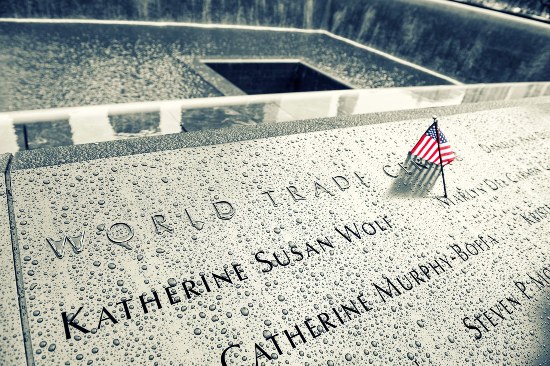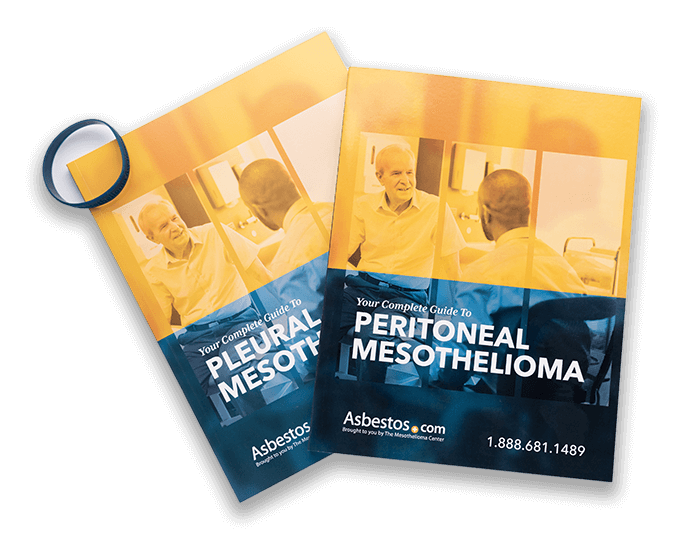COVID-19 on 9/11: Virus Impacts Survivors, Commemorations
Awareness & ResearchWritten by Tim Povtak | Edited By Walter Pacheco

As a 9/11 World Trade Center first responder whose left foot was crushed by an 8,000-pound steel beam nearly two decades ago, John Feal doesn’t scare easily.
But as Americans commemorate the 19th anniversary of the 9/11 terrorist attacks, Feal is now frightened by the newest assault on our nation: COVID-19.
Feal was stricken suddenly with the virus in late March, leaving him with respiratory symptoms he’d never had before, fearing for his life in a hospital emergency room.
“Nothing scares me normally — I’m a survivor — but that virus did. I felt like I was hit by a bus,” Feal told The Mesothelioma Center at Asbestos.com. “There are three or four days from which I remember absolutely nothing. And the lingering effects are real. I’m still not the same.”
As president of the FealGood Foundation, a prominent first-responders advocacy group, Feal also is a classic example of how the COVID-19 pandemic is targeting this especially vulnerable group of Americans and changing the way the country will approach the 9/11 anniversary this year.
COVID-19 Affecting 9/11 Survivors
The pandemic has changed most everyone’s world dramatically in the last six months. It is particularly dangerous for those with compromised immune systems and pre-existing conditions such as mesothelioma and other asbestos-related diseases, which affect many of those first responders and nearby civilian survivors.
“I know people dying from COVID, some of whom were 9/11 survivors, including some with cancers,” Feal said. “It’s a scary time for a lot of people.”
The 9/11 terrorist attacks killed 2,753 people at the site of the World Trade Center in New York City that day. Almost as many have died since from illnesses related directly to the cleanup and the toxic cloud created by the collapse of the twin towers that lingered over the city for months.
More than 105,000 people have enrolled in the World Trade Center Health Program, which provides monitoring and medical treatment for anyone who was in the surrounding areas following the attacks and may have been affected.
Health effects of 9/11 were compiled and evaluated by another program, the World Trade Center Health Registry, for a period of time following the terrorist attacks. According to the registry, an estimated 410,000 people were exposed to pulverized concrete, glass, asbestos, metals, mercury, poisonous gases and myriad other dangerous substances.
“9/11 made these people sicker, more vulnerable,” said thoracic surgeon and asbestos-disease specialist Dr. Raja Flores of Mount Sinai Hospital in New York City. “There is still a lot we don’t know about COVID-19, but the healthier you are to begin with, the better your chances of beating it. Here you’ve got people who were risking their lives to save us, and now they’re getting sick because of their selflessness.”
Almost 75,000 of those in the World Trade Center Health Program are suffering today from a wide range of life-changing illnesses, many of which are chronic respiratory or gastrointestinal conditions that contribute to their vulnerability to COVID-19.
More than 17,000 have reported some type of cancer. One of those is mesothelioma, a rare cancer caused by the inhalation or ingestion of asbestos fibers.
Those involved in the 9/11 recovery and cleanup efforts were 5% to 30% more likely to develop one of the cancers than those who were not involved.
“This was kind of a no-brainer, just common sense,” Flores said. “If you expose people to things that you know cause cancer, they are going to get cancer.”
Pandemic Alters 9/11 Anniversary Events
Much like COVID-19 has changed the American way of life — limited crowds, virtual events, social distancing, wearing masks — the pandemic has also changed the way the 9/11 anniversary will be commemorated in 2020.
The 9/11 Memorial & Museum in New York City annually hosts a live recitation of the names of those who died in the twin tower attacks. It’s an event that typically attracts thousands, but the coronavirus-conscious observance this year has changed the routine.
Only a prerecorded audio of family members reading each name will be on the program to discourage crowds from gathering.
Officials at the 9/11 Memorial & Museum also announced earlier this month they were cancelling their annual Tribute in Light, which is erected early each September to honor 9/11 survivors.
After considerable outcry from disappointed citizens, officials decided two days later to still stage the light installation that can be seen for miles.
“This year, its message of hope, endurance and resilience is more important than ever,” 9/11 Memorial & Museum CEO Alice M. Greenwald said in a statement addressing the change of plans.
The organization’s concessions to COVID-19 prompted the Stephen Siller Tunnel to Towers Foundation to plan a separate event — just blocks away from the ground zero memorial — where a live reading of the names will be done at the same time.
At the 9/11 Responders Remembered Park on Long Island, the annual naming ceremony will be a combination in-person and virtual event this year, another concession to the virus that will reduce crowd size.
The park wall, on which names are inscribed, is reserved only for ground zero responders, both paid and volunteer, who have died from a 9/11-related illness.
Another 163 names will be added to the wall this year — those who have died since the 18th anniversary — pushing the wall total past 1,700.
Feal, who is also on the board of directors for the 9/11 Responders Remembered Wall, said that COVID-19 may have contributed to as many as three dozen of the deaths in the incoming class.
Taking Care of 9/11 Heroes
While COVID-19 has taken a toll on the 9/11 responders, they have been fortunate in the way the country has responded to their plight.
The World Trade Center Health Program was launched in 2011 to monitor and care for people across the United States living with post-9/11 health problems, including those undergoing mesothelioma treatment.
Part of that program is substantial early screening and proactive health care. This can spot serious problems, like mesothelioma symptoms, in the early stages, when they are most treatable. Their health care covers COVID-19.
They — and their families — also benefit greatly from the September 11th Victim Compensation Fund, which will provide lifetime financial assistance for thousands.
Federal legislation was passed in 2019 that extended the fund until 2092, a massive monetary commitment that has been estimated to eventually cost $100 billion.
The fund covers individuals who were injured as a result of the terrorist attacks or in the follow-up rescue and recovery efforts. It also covers families of those who have died since 2001.
Close to 30,000 people have had their eligibility approved since the program began. The majority of those involved are police officers, firefighters, rescue and recovery workers, along with volunteer first responders.
Working Around the COVID-19 Pandemic
Although in-person health care has been slowed everywhere by COVID-19, it has not stopped the most seriously affected 9/11 survivors from receiving much-needed treatment.
Neither has it slowed those seeking legal help for a diagnosis of an asbestos cancer potentially related to exposure, such as malignant mesothelioma.
Attorneys are successfully utilizing teleconferencing, virtual meetings and electronic signatures to avoid in-person contact.
According to The New York Times, the coronavirus pandemic has suspended the pretrial proceedings of the upcoming war crimes court at Guantanamo Bay, Cuba, where five men accused of planning the 9/11 attacks are scheduled to be tried in 2021.
All five face the death penalty in the long-awaited trial. The pandemic delay has been a disappointment for many family members of those who died.
Next Generation of 9/11 Survivors
The COVID-19 virus has been a wake-up call for one group of often overlooked and rarely studied 9/11 survivors: The youngest ones with the most years to lose. They were in schools nearby when attacks occurred.
They also returned to school less than a month later, after public officials erroneously assured their parents it was safe to breathe the contaminated air.
“These are challenging times for us right now,” Lila Nordstrom, who was a senior at Stuyvesant High School in 2001, told The Mesothelioma Center at Asbestos.com. “Yes, there is real concern. These are scary times.”
Stuyvesant is just three blocks from where the World Trade Center stood, almost next door to the site of a debris barge, and close to where fires were burning for another two months.
There was danger in the air.
“None of us had to be exposed, but we were when we returned to an area that wasn’t even open to the public yet,” Nordstrom said. “We’re the ones you may one day see with those cancers with the long latency periods like mesothelioma. That’s concerning.”
Over the past few years, several of her classmates have been diagnosed with respiratory issues, gastrointestinal ailments, serious sinus problems and post-traumatic stress disorder.
One of those classmates, 33 at the time, died of gastric cancer less than a year ago.
Nordstrom has started a nonprofit organization called StuyHealth, which helps those survivors navigate the World Trade Center Health Program and the September 11th Victim Compensation Fund.
Her target audience is those who returned to school in the weeks after the attack — especially the youngest ones — many of whom still believe in the invincibility of youth.
COVID-19 seems to have caught the attention of those schoolmates as they relate it to what they went through — and often dismissed — 19 years ago.
“There has been an uptick in interest in the World Trade Center Health Program. And that’s a good thing,” Nordstrom said. “Even when they still feel that invincibility of youth — and they still feel really well — they are considered high risk today because of where they’ve been.”




